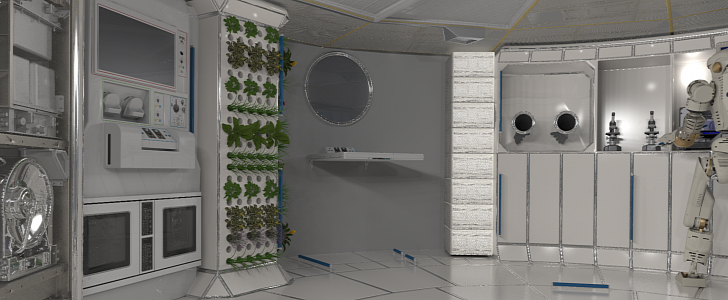Shortly after Lockheed Martin announced it finished work on a habitat meant for the lunar outpost NASA calls Gateway, the American space agency revealed that it started testing several other habitat mockups created by five different companies.
The five prototypes include the one created by Lockheed, but also projects engineered by Northrop Grumman, Boeing, Sierra Nevada Corporation, and Bigelow Aerospace. The evaluation will be conducted in Florida, Texas, Alabama and Nevada.
The tests will be conducted over the following months and will involve all types of NASA personnel, from astronauts to flight operators now training to handle the Gateway. The tests are meant to evaluate everything from design to “day-in-the-life” procedures for each habitat.
NASA says none the habitats currently being tested will actually make it in orbit around the Moon. All the lessons learned during the tests will be used to design the actual units to be sent up over the next decade.
“These tests were formulated so that we can do a side-by-side comparison of very different and innovative concepts from U.S. industry,” said in a statement Marshall Smith, NASA head of human lunar exploration programs.
“While we won’t dictate a specific design when we procure the U.S. habitat, we will enter the procurement phase with far less risk because of the knowledge we gain from these tests.”
When finished, the Gateway will be comprised of at least a power and propulsion element, as will have habitation, logistics and airlock capabilities. The first components to be built and launched sometime in 2022 will be the power and propulsion units.
One year after the launch of the propulsion element, the habitation modules would follow. Initial details call for them to be capable of housing an unspecified number of personnel for a period of between 30 and sixty days.
When fully operational, the station will act as a staging area for missions to the Moon and Mars.
The tests will be conducted over the following months and will involve all types of NASA personnel, from astronauts to flight operators now training to handle the Gateway. The tests are meant to evaluate everything from design to “day-in-the-life” procedures for each habitat.
NASA says none the habitats currently being tested will actually make it in orbit around the Moon. All the lessons learned during the tests will be used to design the actual units to be sent up over the next decade.
“These tests were formulated so that we can do a side-by-side comparison of very different and innovative concepts from U.S. industry,” said in a statement Marshall Smith, NASA head of human lunar exploration programs.
“While we won’t dictate a specific design when we procure the U.S. habitat, we will enter the procurement phase with far less risk because of the knowledge we gain from these tests.”
When finished, the Gateway will be comprised of at least a power and propulsion element, as will have habitation, logistics and airlock capabilities. The first components to be built and launched sometime in 2022 will be the power and propulsion units.
One year after the launch of the propulsion element, the habitation modules would follow. Initial details call for them to be capable of housing an unspecified number of personnel for a period of between 30 and sixty days.
When fully operational, the station will act as a staging area for missions to the Moon and Mars.






